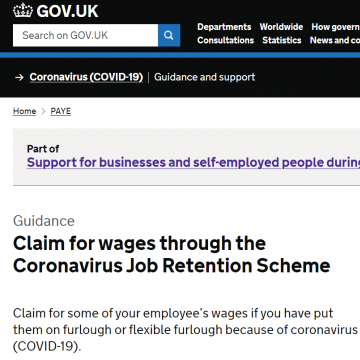Managing a successful return to the workplace
Blog post

The official ‘work from home if you can’ order ended on 19 July, albeit that government guidance states that it ‘expects and recommends a gradual return over the summer’.
A significant proportion of the UK workforce continued to attend their places of work throughout the pandemic, for example shop, factory or healthcare workers. However, for those office workers who have been working from home for the past 17 months, returning to the office is likely to represent a big change. Here we explore the options and highlight some of the considerations for employers.
Deciding on the right approach for you
The term ‘hybrid working’ has been used a lot in the press recently and many commentators are suggesting this is the future of work for most organisations. The thinking is that our changed working practices over the past year have demonstrated that working away from the office is not only possible, but in many circumstances and for many people, actually preferable. Employees with caring responsibilities can be more flexible; removing the commute leaves more time in the day for other activities; productivity actually increases with fewer distractions; reduced overheads from reducing the need for office space…
Working from home isn’t for everyone however. Employees have reported loneliness and isolation from a lack of social contact that attending an office provides. There are reduced opportunities for informal learning and development and the distribution of work can be more challenging when line managers have less oversight of employees’ workloads. Some employers, notably many of the US banking giants, have been very clear that continued working from home is not an option; they expect employees to be in the office in order to perform their role effectively.
So, how do you decide the right approach?
Think about the nature of your work
If work can be done just as easily from home as from the office, then it may be appropriate to allow employees to continue remote working. Remember there are likely to be some roles that really can’t be performed from home, however. Be careful that any policies put in place give you the ability to refuse permission for certain employees to work from home.
Ask your employees
Many employers are choosing to survey their workforce to understand preferences. This can be a great boost for morale and engagement. However, be careful to take note of the outcome of the survey and either act on it or clearly communicate why you can’t. If you already know the approach you as an employer wish to take, and this won’t change regardless of the outcome of a staff survey, don’t do one.
Perform a cost-benefit analysis
As with any other business decision, don’t forget to weigh up the financial implications of a return to the office, continued working from home and/or a hybrid model. If you pay employees allowances for working from home, does that negate any cost saving associated with a reduction in office space? Will you need to pay expenses for employees travelling from home to other locations (e.g. to meet with clients)?
Developing your policy
If you decide to implement a hybrid approach you may need to develop a new policy, or to adapt an existing one. Remember that hybrid working is just one form of flexible working and employees with six months continuous service have the right to request other forms (for more on this see our article on the future of flexible working).
If you would like support or guidance in developing or adapting a flexible working policy, please contact us.

Returning to the office
Follow the government guidance for your business. Remember that all businesses will need to conduct a health and safety risk assessment, including the risk of Covid-19 and to take reasonable steps to mitigate any risks you identify. The government recommends that these steps may include:
- cleaning surfaces that people touch regularly;
- identifying poorly-ventilated areas in the venue and taking steps to improve air flow;
- ensuring that staff and customers who are unwell do not attend the workplace or venue;
- communicating to staff and customers the measures you have put in place.
Don’t forget that although some of your colleagues may be chomping at the bit to get back into the office, for others this is likely to induce a high level of anxiety. With Covid case numbers still high, the removal of restrictions and a return to the workplace is likely to be worrying for many people, not least anyone who has previously been advised to shield due to being clinically extremely vulnerable. Remember also, that having spent a considerable proportion of the past 16 months at home and distancing from others, even colleagues who have not previously been shielding may well feel some level of anxiety at the prospect of mixing again.
What happens if employees don’t want to return?
Talk to your colleagues. Communication really is key – take the time to understand your colleagues’ concerns and explain the measures you have put in place to reduce the risk. Some things that might help could be:
- Agreeing a hybrid working arrangement where employees attend the workplace some of the time and work from home for the rest;
- Being flexible around start and finish times so that employees using public transport can travel at quieter times;
- Maintaining social distancing and additional hygiene measures in the workplace, including the use of face coverings where appropriate
Can you force your employees to return to the office?
As an employer you are legally entitled to require your employees to work at the location specified in their contract of employment and if it is not organisationally appropriate for employees to continue to work from home, you are within your right to expect employees to return to the workplace. Despite some rumours that the government intended to make it a right for employees to continue working from home following the end of the Covid restrictions, that hasn’t happened. Some employees may try to argue that as they have been successfully working from home for more than a year, employers cannot now claim that this is not sustainable for the organisation. Most legal commentators agree that this argument is likely to fail, however it hasn’t yet been tested in the employment tribunal. HR package members can contact us for advice if you are considering requiring employees to return to the workplace against their will.

Long Covid – guidance from an HR perspective

The end of the furlough scheme...

The future of flexible working

HR advice and support

